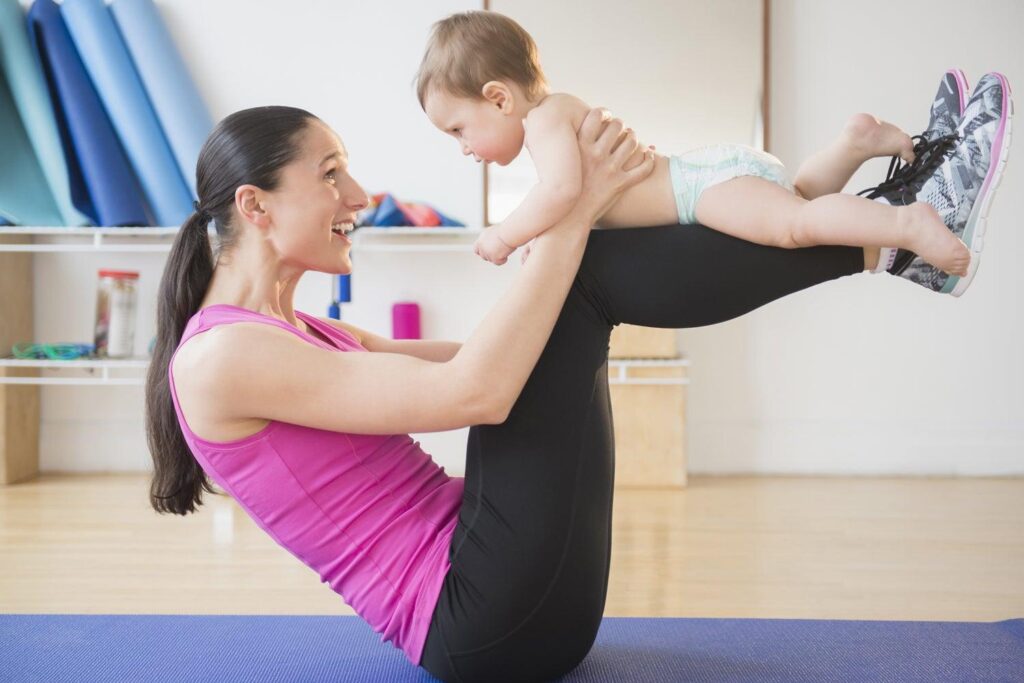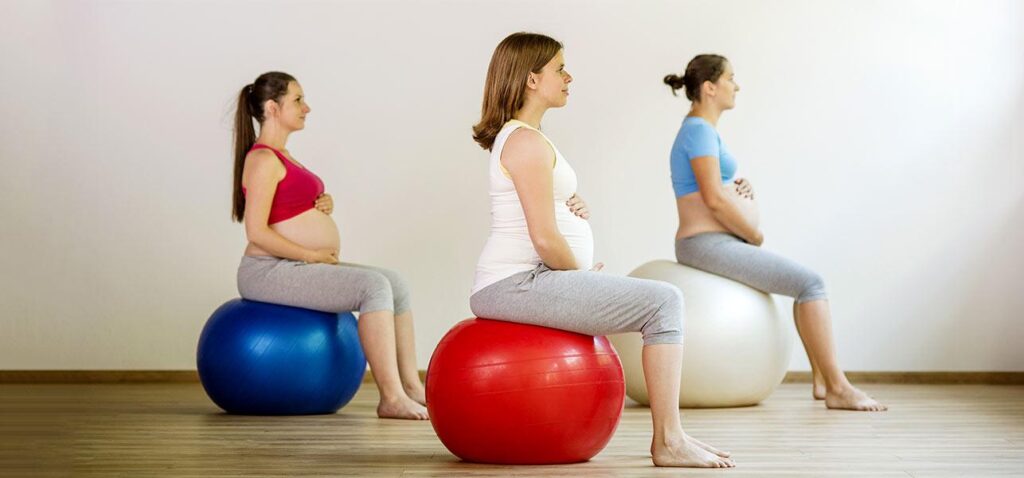After giving birth, your body has undergone significant changes, and one of the most common concerns for new mothers is rebuilding core strength. During pregnancy, the abdominal muscles stretch to accommodate your growing baby, which can lead to a weakened core and even separation of the abdominal muscles (diastasis recti). Strengthening your core not only helps regain physical fitness, but also improves posture, reduces back pain, and supports overall recovery.
In this article, we’ll explore some simple yet effective postpartum exercises to help you rebuild core strength safely and gradually.
Before You Begin: Important Reminders
- Listen to Your Body: Start when you feel ready, and always listen to your body. It’s crucial to be gentle with yourself during this period.
- Consult Your Doctor: Before beginning any exercise routine, consult with your healthcare provider, especially if you had a C-section or complications during delivery.
- Focus on Breathing: Breathing exercises help to reconnect your core muscles and reduce stress. Make sure you engage your core during each movement to maximize effectiveness and prevent injury.
- Diaphragmatic Breathing
Diaphragmatic breathing, or deep belly breathing, is a great way to start reconnecting with your core muscles. It helps to activate the deep abdominal muscles, including the diaphragm and pelvic floor.
How to Do It:
- Lie on your back with your knees bent and feet flat on the floor. You can also do this seated if lying down isn’t comfortable.
- Place one hand on your belly and the other on your chest.
- Inhale deeply through your nose, letting your belly rise as you fill your lungs.
- Exhale slowly through your mouth, drawing your belly button towards your spine as you breathe out.
- Repeat this for 10-15 breaths, focusing on using your core with each exhale.
- Pelvic Tilts
Pelvic tilts are gentle but effective for re-engaging your core and strengthening the lower back muscles.
How to Do It:
- Lie on your back with your knees bent, feet flat on the floor, and arms by your sides.
- Inhale and allow your lower back to arch naturally.
- As you exhale, gently tuck your pelvis in, pressing your lower back into the floor.
- Hold for a second, then relax.
- Repeat 10-15 times, maintaining a slow and controlled movement.
- Heel Slides
Heel slides are a great beginner exercise that helps strengthen the deep core muscles.
How to Do It:
- Lie on your back with your knees bent and feet flat on the floor.
- Inhale, and as you exhale, tighten your core and slowly slide one heel away from your body until your leg is almost straight.
- Inhale and return the leg to the starting position.
- Alternate legs and perform 10 slides on each side. Ensure your lower back stays in contact with the floor throughout the movement.
- Bridge Pose (Glute Bridge)
The bridge pose is excellent for strengthening the glutes, lower back, and core.
How to Do It:
- Lie on your back with your knees bent and feet flat on the floor, hip-width apart.
- Place your arms at your sides with palms facing down.
- Inhale, and as you exhale, squeeze your glutes and lift your hips towards the ceiling.
- Hold at the top for a couple of seconds, then slowly lower your hips back down.
- Perform 10-15 repetitions, focusing on engaging your core and glutes.
- Modified Side Plank
This is a gentle way to begin strengthening the obliques (side core muscles) without putting pressure on the abdominal area.
How to Do It:
- Lie on your side with your knees bent and prop yourself up on your elbow, keeping it directly below your shoulder.
- Lift your hips off the ground, forming a straight line from your shoulders to your knees.
- Hold this position for 10-15 seconds, then lower your hips back down.
- Repeat 5 times on each side, gradually increasing the holding time as you get stronger.
- Bird-Dog (Modified)
The bird-dog exercise is great for improving core stability and balance, while also engaging the lower back and glutes.
How to Do It:
- Start on all fours, with your hands under your shoulders and knees under your hips.
- Tighten your core and extend your right arm forward and left leg backward, keeping them parallel to the floor.
- Hold for a couple of seconds, then slowly bring them back to the starting position.
- Repeat on the other side, extending the left arm and right leg.
- Perform 8-10 repetitions on each side, maintaining a controlled movement and stable core.
- Seated Tummy Sucks (Seated Core Activation)
This exercise can be done while sitting, making it a great way to activate your core during everyday activities.
How to Do It:
- Sit on a chair or exercise ball with your feet flat on the floor and your back straight.
- Take a deep breath in, then exhale and pull your belly button in towards your spine.
- Hold for 5 seconds, then release.
- Repeat 10-15 times, focusing on controlled movements.
Tips for Success
- Take It Slow: The postpartum period is a time for healing. Avoid any exercises that feel painful or overly strenuous.
- Incorporate Consistency: Aim to do these exercises 3-4 times a week to build up strength gradually.
- Avoid Crunches Early On: Exercises like crunches and sit-ups can put too much pressure on the abdomen in the early stages and may worsen diastasis recti. Focus on gentle core engagement until cleared by your doctor.
An insight from mamahood
Every bit of progress counts! Even just dedicating a few minutes a day to these exercises can make a difference in rebuilding your core strength. Postpartum recovery is not about perfection—it’s about taking small, consistent steps to feel more like yourself again. Remember that postpartum recovery is a journey, and it’s important to be patient and compassionate with yourself as you work towards your goals. Celebrate each small win, and don’t worry if you have days when exercise isn’t possible—rest is also an important part of the healing process. It’s also important to remember that every mother’s journey is different. There is no timeline for “bouncing back”—your body is strong and capable, and it deserves the time and care it needs to heal. Make sure to nourish your body with healthy foods, get as much rest as possible, and ask for help when you need it. For more support, feel free to connect with Mamahood Health Advisors via live chat or private message, or explore Mamadoc—your AI doctor offering tailored guidance just for you.







